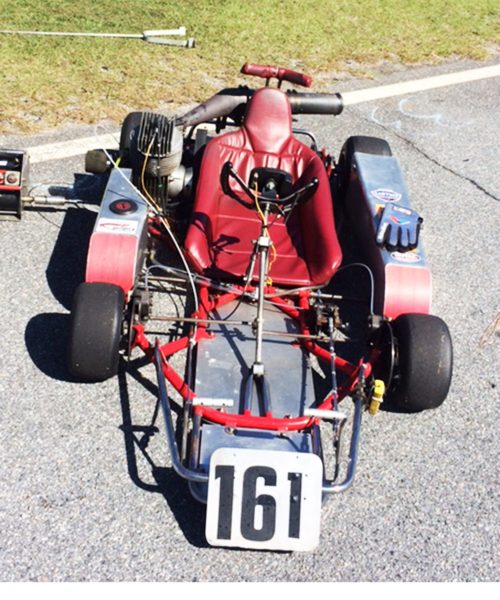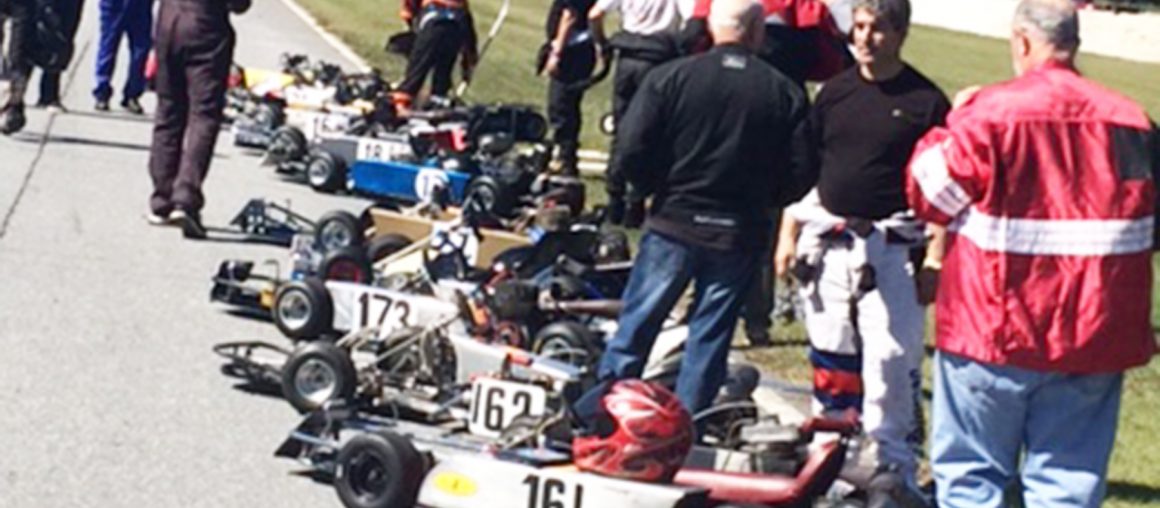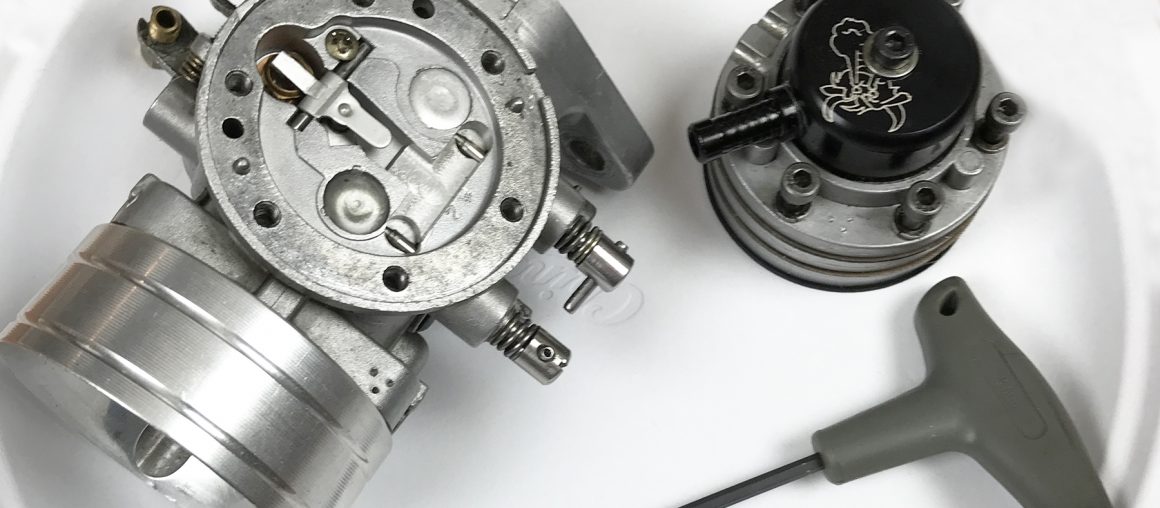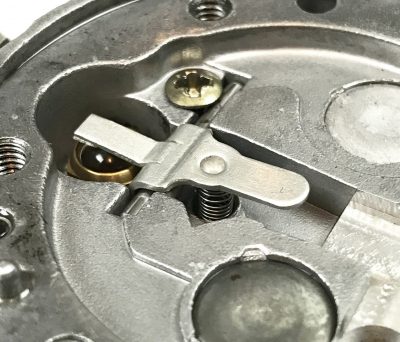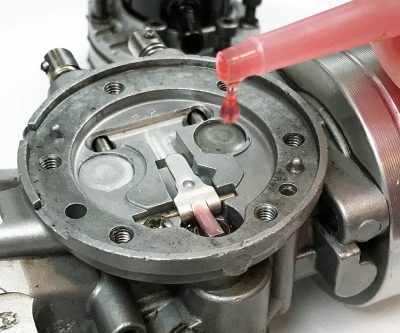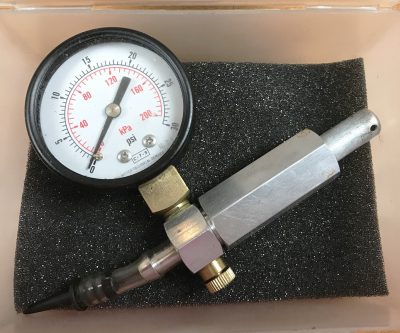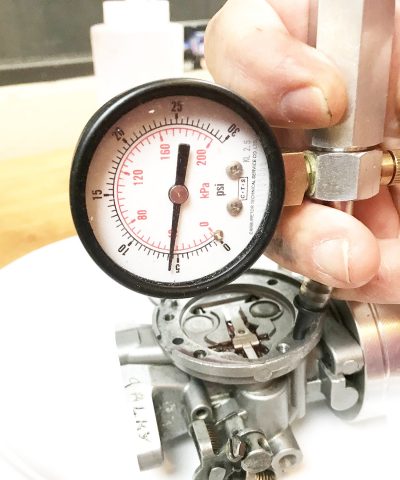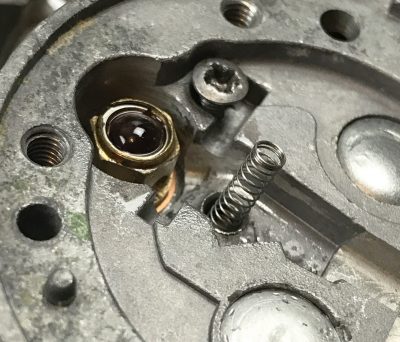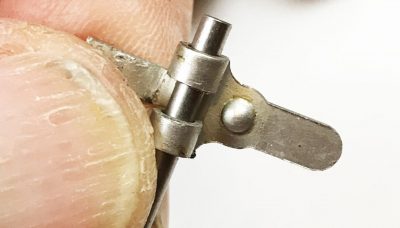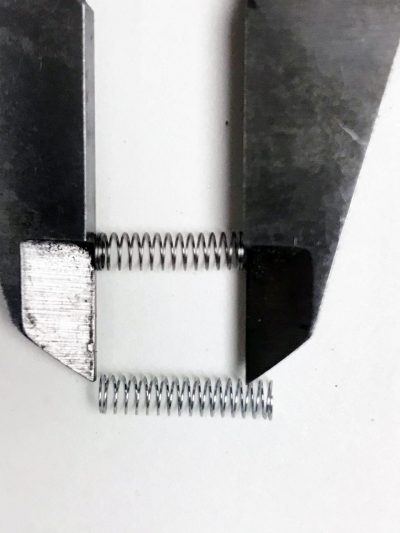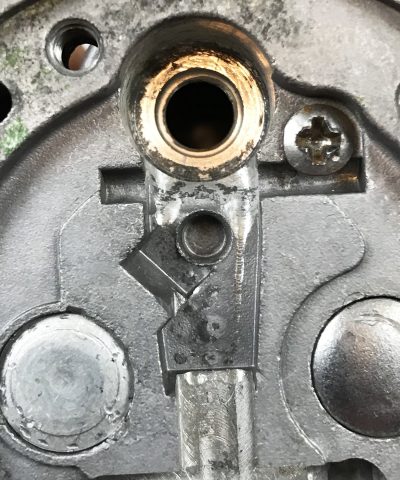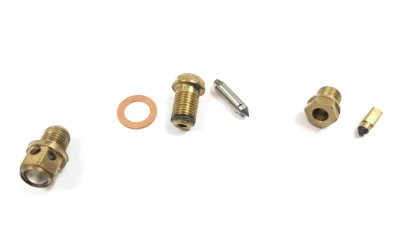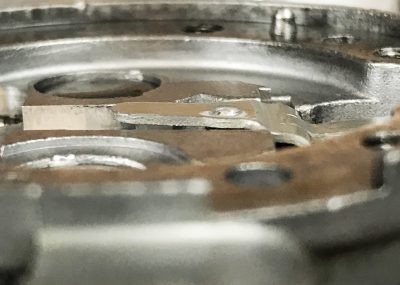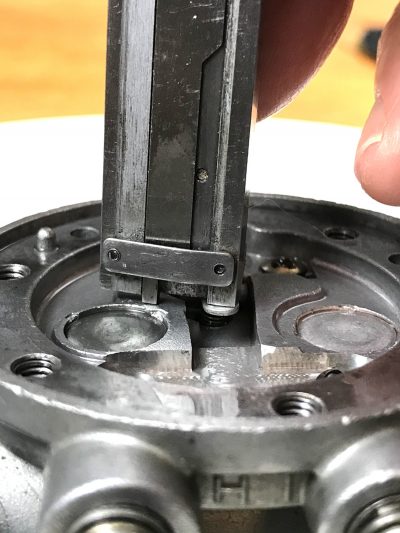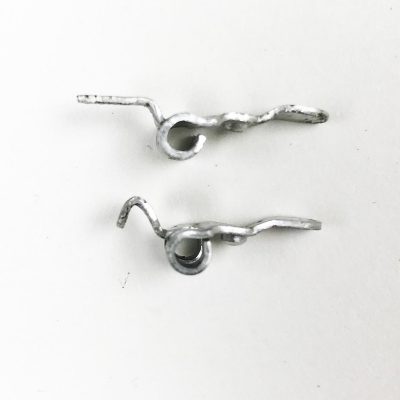14th Annual Southern Vintage Kart Classic
By Dick Charest
Photos by Alan Lidke
The 14th Annual Southern Vintage Kart Classic was held at Roebling Road Raceway on October 17-18, 2020. The track is located near Bloomingdale, GA. It is 2.02 miles long with nine turns. The facility features a 60-acre paddock with paved access roads.
Each year in March the Southern Kart Club (SKC) hosts the 2nd race of the World Karting Association National Road Racing Series. However, in October the SKC holds a club race at Roebling Road with special emphasis on vintage karts. The vintage karts run four exhibition races over the 2-day weekend. There are two, 15-minute vintage exhibition races on Saturday and two more 15-minute vintage exhibition races on Sunday. Both vintage lay-down enduro karts and vintage sprint karts are welcome to participate.
The weather was beautiful on both Saturday and Sunday. It was sunny and cool in the morning but warmed up nicely as the day progressed. The turnout was more than expected and registration on Saturday morning extended throughout the 1st practice session. To help those who missed the 1st practice session, a short 3rd practice session was run before the races started.
I missed the 1st practice session and during the 2nd practice session my engine did not run well, the clutch under slipped, and I could not get the CHT up to the desired range even though I leaned out the carb HS needle. By the 2nd lap the spark plug was getting badly fouled so I came into the pits. After practice I installed a new spark plug and turned in each of the clutch adjusters to increase clutch slip. During the short 3rd practice session, the engine ran better but I still had an ignition problem and the clutch still under-slipped. I figured that the clutch under-slipping prevented the engine from getting into its power band and the bogging at low RPMs caused the spark plug to foul. After practice I turned in each of the clutch adjusters again to increase clutch slip and installed a new spark plug for race #1.
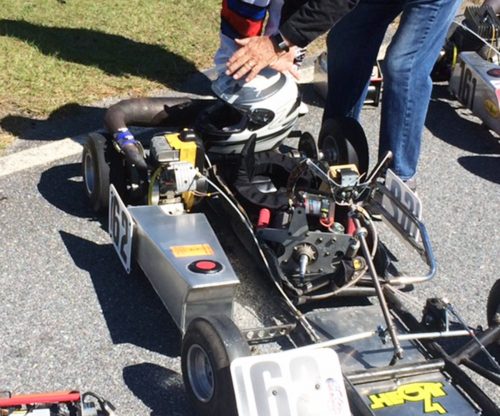
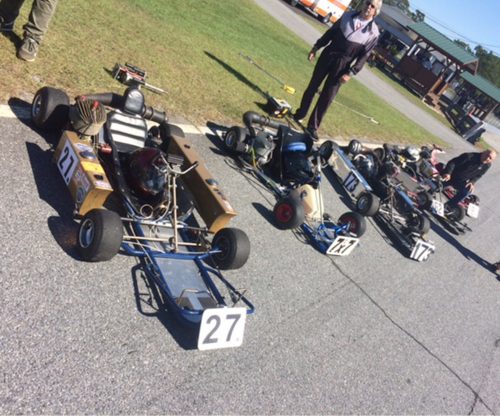
Vintage Exhibition Race #1 on Saturday

When the green flag dropped, Tony Ellison got a good start and took the lead of the race. I was gridded last of the 11 karts that were in the vintage race. I got a good start and started passing karts. The engine ran well but still at low temperature. The clutch worked better but by the 3rd lap the ignition problem returned. I ran another lap, but the ignition problem got worse, so I came into the pits rather than getting stranded out on the track. Tony Ellison set fast time for the Vintage 1 race and won the race with his K-35 completing 10 laps. Arthur McKenny was 2nd with his Yamaha, Chris Foskey finished 3rd with his Yamaha, and Terry Armstrong finished 4th with his DAP T-62. Arthur, Chris, and Terry all completed 9 laps. All 11 karts that started completed at least one lap. Five entries in the Vintage race did not make the grid.
Since my ignition problem occurred only after the engine electrical system got warm even with a new spark plug, I suspected that the coil had gone bad. After the race I installed a good spare coil and test ran the engine in the pits. It started up easily and ran well so I tried it again in Vintage race #2.
Vintage Exhibition Race #2 on Saturday
As in race #1, when the green flag dropped, Tony Ellison got a good start and took the lead of the race. I was gridded 9th of the 10 karts that started the race, but I got a good start and started passing karts. Although the engine ran well, the clutch under-slipped and that hurt my lap times in the curves on the backside of the track. I had a difficult time getting the engine up into its power band. However, I drove on and completed the race. Tony Ellison set fast time for Vintage 2 race and won the race with his K-35 completing 10 laps.
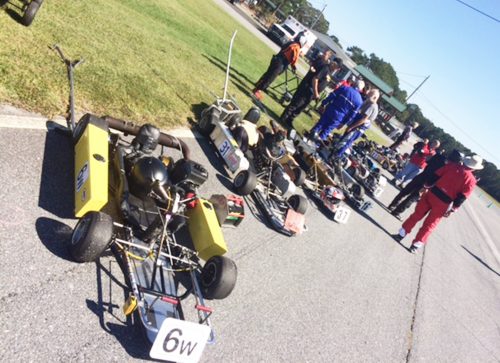
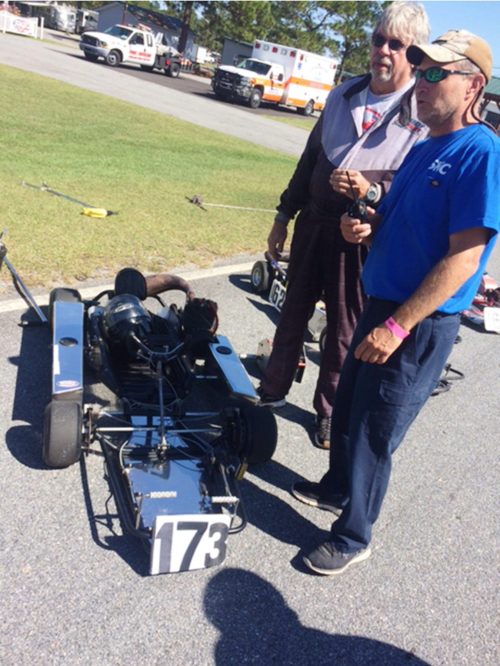
Arthur McKenny was 2nd with his Yamaha, Chris Foskey finished 3rd with his Yamaha, and I finished 4th. Arthur, Chris, Scott Orr and I all completed nine laps. Bill Anderson, Bennett Armstrong, and Harry Foskey all completed eight laps. They were followed by Terry Armstrong and Trevor Armstrong. Six entries in the Vintage race did not make the grid.
After the race I changed engine and adjusted the clutch for Sunday’s Vintage 3 race.
I ran a short practice on Sunday morning to verify everything was OK with the engine. Although the engine ran well, the clutch over slipped badly so I came into the pits after one lap. I backed out the clutch adjusters to the setting I came to the track with. Since there was no more practice, I tested the clutch engagement in the pits, and it seemed to be OK for the race.
Vintage Exhibition Race #3 on Sunday

I got a great start and passed everyone before entering turn one to take the lead of the race. Chris Foskey, Terry Armstrong, and Tony Ellison were fairly close behind. Tony dropped out on lap one due to a stripped drive belt. Terry Armstrong and Bill Anderson dropped out on lap three. Chris was quicker than me on the back side of the track because my clutch under slipped which slowed me down on that portion of the track. However, I consistently pulled away from him on the straight. He drafted me to stay in contact, but he could not overtake me. The engine ran well, and I maintained the lead of the race to the end. I set fast time for Vintage 3 and won the race by only 3.119 seconds. Chris Foskey finished 2nd, Bennett Armstrong finished 3rd, Scott Orr finished 4th followed by Alan Lidke, Harry Foskey, Tony Severino, and Trevor Armstrong. Three vintage karts did not make it to the starting grid for race 3.
After the race I adjusted the clutch to get more slip and prepared the kart for Vintage race #4.
Vintage Exhibition Race #4 on Sunday
As in Vintage race 3, I got a great start and took the lead before getting into turn 1. After one lap I got a high CHT warning light so I richened the carb HS needle. However, the high CHT warning light persisted so I richened the carb HS needle again. Then I noticed that the CHT was reading 485°F then 520°F while the engine continued to run well. I realized that the CHT reading was erroneous, so I returned the carb HS needle setting to about where it was originally and continued throughout the race with the high CHT warning light on. Tony Ellison and Chris Foskey were close but on lap three, Tony Ellison dropped out. His engine mount had come loose, and the engine tipped over in a turn. Terry Armstrong had engine problems early in the race and dropped out. While lapping a couple of back markers I got enough of a lead on Chris Foskey that he was not able to draft me. I pulled away from the field and won the race by 1 minute and 21.673 seconds over Scott Orr. Bill Anderson (173) finished 3rd followed by Chris Foskey and Harry Foskey. I set fast time for the Vintage 4 race.
This event wrapped-up the vintage enduro season for 2020. The next road racing event with a vintage class is the WKA event at Daytona International Speedway between Christmas and New Years. That will be the first event of the 2021 racing season.
